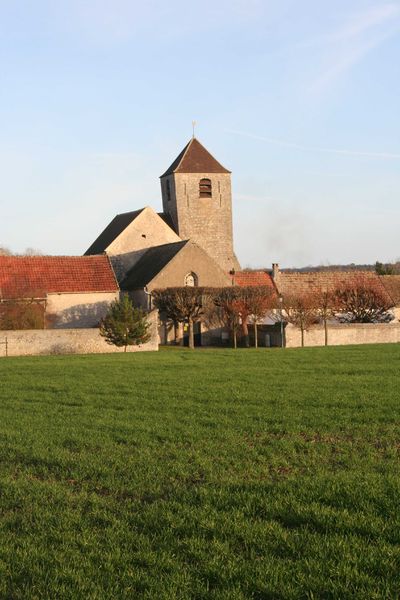Eglise Saint-Gervais et Saint-Protais
Courdimanche-sur-Essonne
Patrimoine culturel
Courdimanche’s church has a very typical rustic style from the Hurepoix dating from the 12th century. It also possesses nice furniture that is classified.
Coordonnées
rue des Francs tireurs91720 Courdimanche-sur-Essonne
06 88 57 62 12
01.64.98.80.57
The oldest parts of the church are from the 12th century. Another part of the church, the Southern side, was added during the Hundred Years War. The wooden and plaster coverings of the nave were done during the 18th century. Its overall style is typical from the old French region of the Hurepoix and the building is rustic. Its specificity is that its barrel-vaulted nave has a plaster coating, which is really rare in the area. Before the French Revolution, the church had two bells, however, one was requisitioned to be melted and create a cannon used during the conflict.
Numerous graves were found under the high altar. Those are the tombstones of old parish priests. However, one of those graves is particularly interesting : the tombstone of Marguerite Chappart, who had a special permission to be buried inside the church as she made a lot of donations to the church when she was alive. This stone is covered in a text that is almost a testament.
The bell tower of the church has been classified as part of the Monuments Historiques since 1925 and was restored at the end of the 19th century. Moreover, a large number of the furniture of the church were classified in 1982, especially wooden statues. The retable, the posterior side of the altar, is decorated with three statues from the 17th century.
The church is dedicated to two saints : Saint-Gervais and Saint-Protais (Saint Gervasius and Saint Protasius). They were twin brothers and they always are associated with each other. They were martyrs from the 1st century. They were from the city of Ravenna in Italy and spent both their lives giving to the poorest. They always met several saints who died as martyrs, their parents are part of them. They were arrested by Neron’s army and died of torture after they refused to be sacrified for pagan gods.
SOURCE: Mairie de Courdimanche-sur-Essonne, “Le Patrimoine Religieux de Milly-la-Forêt et de la Communauté de Communes des 2 Vallées” des Amis de Milly-en-Gâtinais et Environs, Parc Naturel Régional du Gâtinais Français
Numerous graves were found under the high altar. Those are the tombstones of old parish priests. However, one of those graves is particularly interesting : the tombstone of Marguerite Chappart, who had a special permission to be buried inside the church as she made a lot of donations to the church when she was alive. This stone is covered in a text that is almost a testament.
The bell tower of the church has been classified as part of the Monuments Historiques since 1925 and was restored at the end of the 19th century. Moreover, a large number of the furniture of the church were classified in 1982, especially wooden statues. The retable, the posterior side of the altar, is decorated with three statues from the 17th century.
The church is dedicated to two saints : Saint-Gervais and Saint-Protais (Saint Gervasius and Saint Protasius). They were twin brothers and they always are associated with each other. They were martyrs from the 1st century. They were from the city of Ravenna in Italy and spent both their lives giving to the poorest. They always met several saints who died as martyrs, their parents are part of them. They were arrested by Neron’s army and died of torture after they refused to be sacrified for pagan gods.
SOURCE: Mairie de Courdimanche-sur-Essonne, “Le Patrimoine Religieux de Milly-la-Forêt et de la Communauté de Communes des 2 Vallées” des Amis de Milly-en-Gâtinais et Environs, Parc Naturel Régional du Gâtinais Français
Prestations, conforts et services
- French
Opening times
From 01/01 to 31/12, daily.


